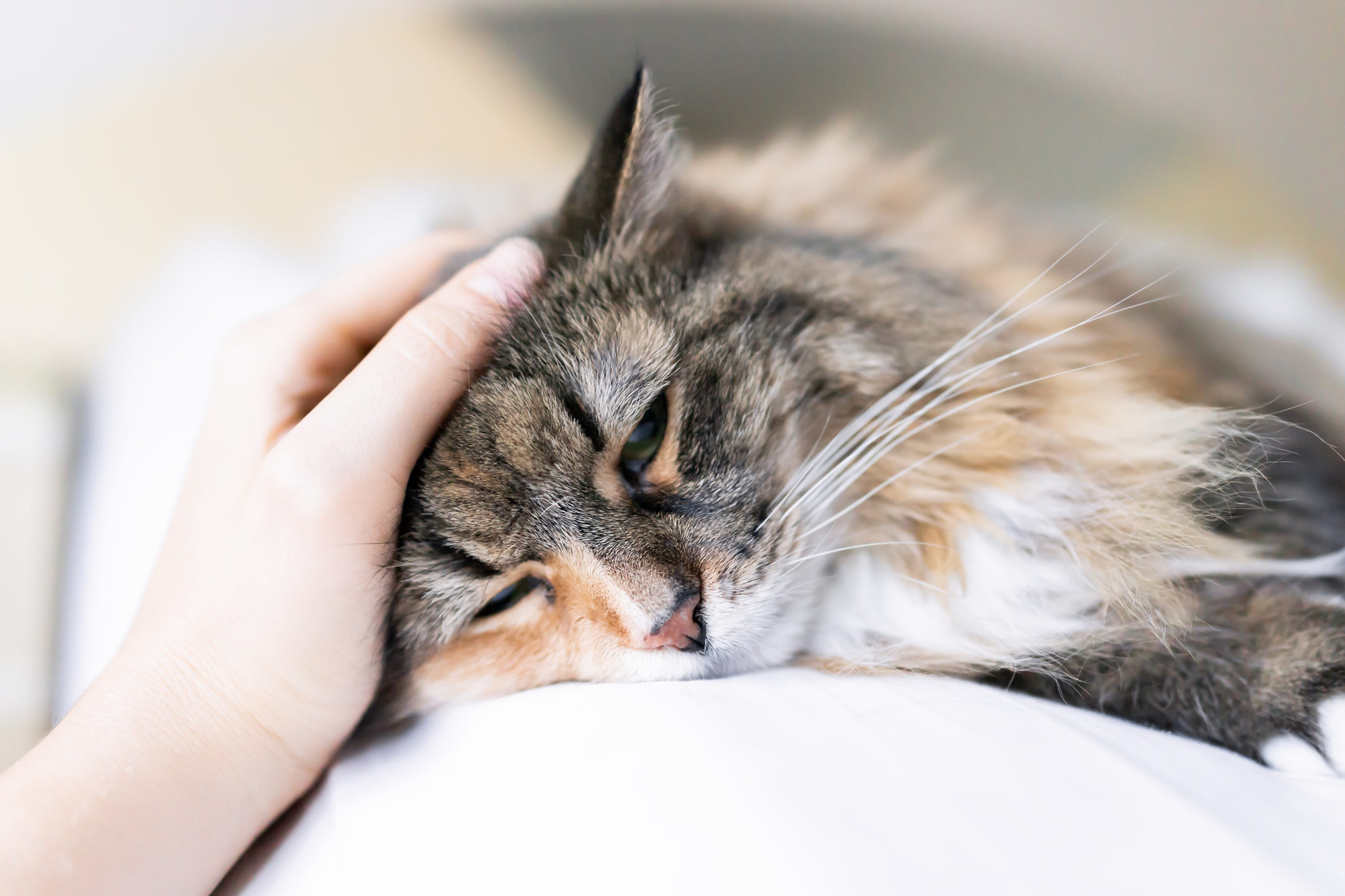6 Signs of a Cat in Pain in Tulsa, OK
Are you worried your cat might be in pain? Do you know how to tell for sure? Cats are known to be experts when it comes to hiding their pain, and some pet owners may not realize how much pain their cats are really feeling until the problem has gotten significantly worse.
As a responsible cat owner, it’s important to learn how to tell when your cat is hurting. This way, you can respond more quickly to the issue and help your pet feel better soon.
Signs that your cat may be in pain include hiding, avoiding food and touch, panting, yowling, and aggressive behavior.

1. Hiding
Hiding is the most common symptom associated with pain in cats. If your cat doesn’t usually hide very often, but you suddenly can’t seem to find them—or if they are hiding more than normal—then they may be in pain.
Consider whether your cat could be stressed or afraid of something. If nothing comes to mind, then it’s important to consider that they may be in pain. Take them to the veterinarian for a checkup and to see if there’s any cause for concern with this new change in behavior.
2. Avoiding Food
Many times, when a cat is hurting, they don’t feel much like eating. Just like how a human in pain may lose their appetite, so might a cat. Additionally, some types of pain may make it difficult for a cat to stand up or bend over a food dish, which can further prevent the cat from wanting to eat.
Avoiding food can be a sign of a wide variety of other health problems, too. If your cat doesn’t seem interested in eating for more than a day, take them to the vet to have them checked out.
3. Doesn’t Want to Be Touched
If a specific part of your cat’s body is hurting, they may avoid being touched in that area. For example, if your cat has a sore back leg and you try to pet the back of their body, they may shy away from you or may even hiss or scratch. The more severe the pain, the more avoidant your cat may become.
Even though your cat may protest, it’s necessary to try to check them more carefully for the source of the pain. You may be able to spot something noticeable, like a cut or a tick buried up on their skin. If not, however, you should see a vet.
4. Panting
Panting is more commonly associated with pain in dogs than in cats, but a cat in pain may also pant noticeably depending on the cause of the problem. You may notice your cat breathing with an open mouth, or they may have their tongue stuck partly out of their mouth. They may also have heaving sides, which indicates heavy breathing with or without panting.
Most cats do not pant often, so it is a sign that something’s wrong. If your cat is panting from heat, take them to a cooler location right away. If not, the problem could be pain.
5. Aggression
If your cat is not normally aggressive but suddenly seems to have a shift in their personality, this may indicate they are in pain. Cats who are in pain are more likely to become aggressive when they are approached by human family members or other animals in the household, because they are afraid that they’ll be injured further by the intruder.
Even if your cat’s sudden aggression isn’t caused by pain, it’s still a good idea to find out what the cause could be. Some behavioral changes could be associated with illness or with cats in heat, for example.
6. Yowling
Most of the time, if a cat is yowling in pain, they are hurt very badly. Cats do not like to make their pain known, so a cat who is hurting enough to make this much noise needs to see an emergency vet right away.
Cats who have been seriously injured in a traumatic accident, such as being struck by a vehicle, may yowl in pain. Additionally, cats who have a life-threatening urinary condition that causes crystals to form in the bladder may also yowl in pain, especially when they try to urinate. These situations are serious and require immediate veterinary care.
Call Animal Emergency Center of Tulsa if Your Cat is in Pain
This information should help you better understand when your cat is hurting. If you notice these behaviors in your cat, and they continue after about a day, it’s a good idea to take them to the vet.
Even if you don’t know the cause of your cat’s pain, the vet can help you figure out what’s going on and diagnose the underlying problem. From there, you can work together to create a treatment plan that will work for you and your pet.
Call Animal Emergency Center of Tulsa at 918-665-0508 if your cat is in pain.
